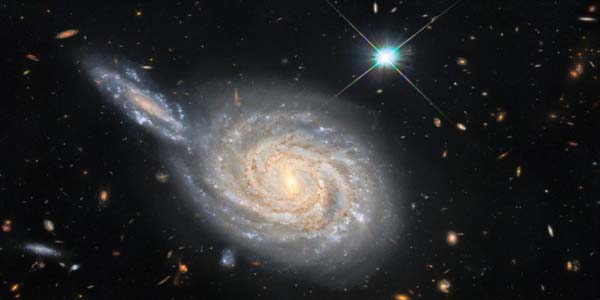
Galactic conjunction captured by Hubble space telescope
The spiral galaxy NGC 105, which is about 215 million light-years away in the constellation Pisces, is captured in the image from NASA/Hubble ESA’s Space Telescope. While it appears that NGC 105 is colliding with another galaxy, this is simply the consequence of the two objects in the night sky aligning by chance.
The elongated neighbour of NGC 105 is actually much further away, and astronomers know very little about it. In astronomy, for example, constellations are formed by the random alignment of their component stars, which are all at widely different distances from Earth.
Camera with a Wide Field of View The three observations in this image are part of a large collection of Hubble observations looking at nearby galaxies that contain two exciting astronomical phenomena: Cepheid variables and violent supernova explosions.
While these two events appear to be unrelated — one is a unique class of pulsing stars, and the other is the cataclysmic dying throes of a huge star’s life – astronomers utilise them both for the same purpose: calculating the immense distances between astronomical objects.
Both Cepheids and supernovae have highly predictable luminosities, allowing astronomers to estimate their brightness. These “standard candles” can provide accurate distance estimations by measuring how brilliant they look when viewed from Earth.
Their result contradicts the expectations of the most widely accepted cosmological model, and their research indicates that there is only a one-in-a-million probability that the gap is due to measurement mistakes.
The disparity between galaxy measurements and cosmic projections has long been a cause of disquiet for astronomers, and these latest findings present compelling fresh evidence that something in our current model of cosmology is either wrong or missing.
